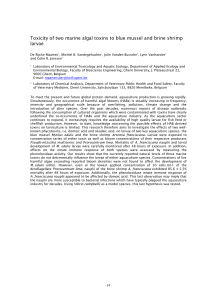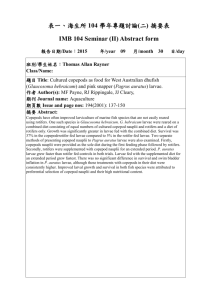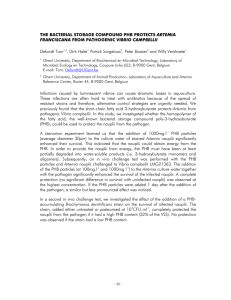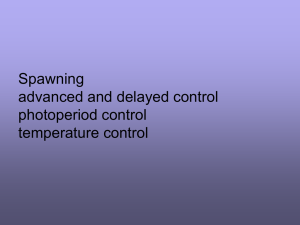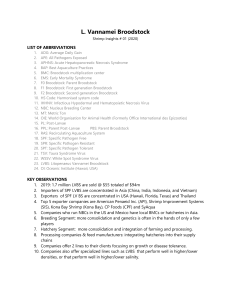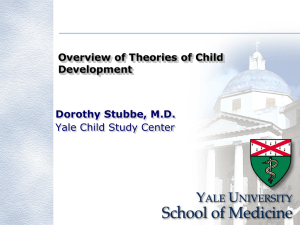Class/Name
advertisement
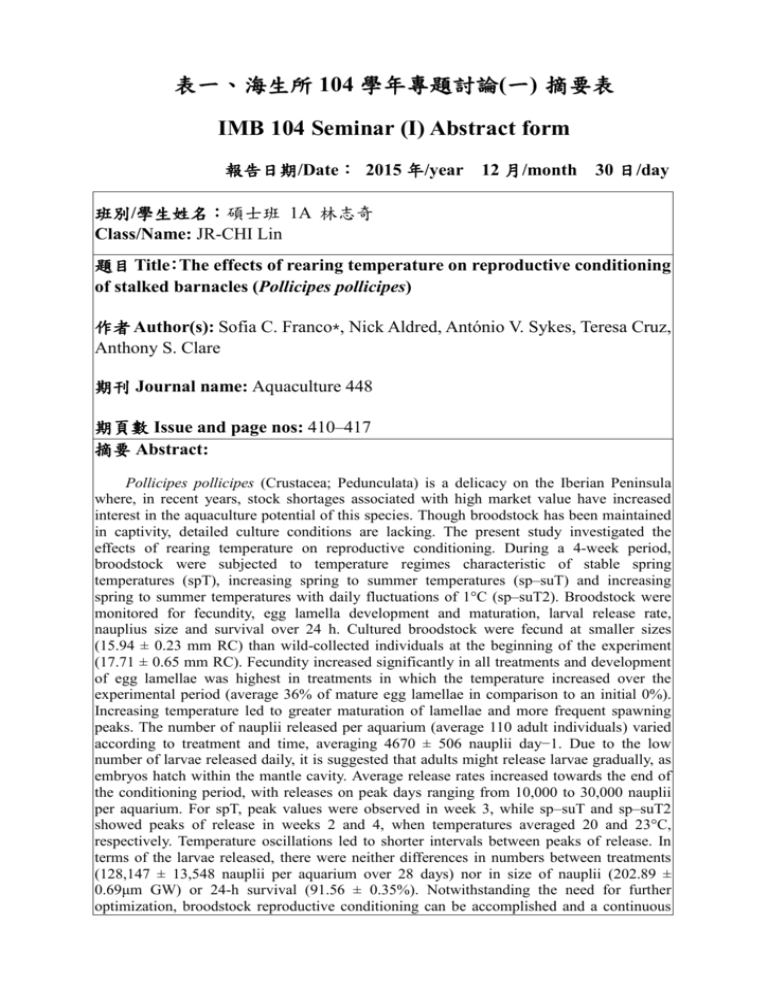
表一、海生所 104 學年專題討論(一) 摘要表 IMB 104 Seminar (I) Abstract form 報告日期/Date: 2015 年/year 12 月/month 30 日/day 班別/學生姓名:碩士班 1A 林志奇 Class/Name: JR-CHI Lin 題目 Title:The effects of rearing temperature on reproductive conditioning of stalked barnacles (Pollicipes pollicipes) 作者 Author(s): Sofia C. Franco⁎, Nick Aldred, António V. Sykes, Teresa Cruz, Anthony S. Clare 期刊 Journal name: Aquaculture 448 期頁數 Issue and page nos: 410–417 摘要 Abstract: Pollicipes pollicipes (Crustacea; Pedunculata) is a delicacy on the Iberian Peninsula where, in recent years, stock shortages associated with high market value have increased interest in the aquaculture potential of this species. Though broodstock has been maintained in captivity, detailed culture conditions are lacking. The present study investigated the effects of rearing temperature on reproductive conditioning. During a 4-week period, broodstock were subjected to temperature regimes characteristic of stable spring temperatures (spT), increasing spring to summer temperatures (sp–suT) and increasing spring to summer temperatures with daily fluctuations of 1°C (sp–suT2). Broodstock were monitored for fecundity, egg lamella development and maturation, larval release rate, nauplius size and survival over 24 h. Cultured broodstock were fecund at smaller sizes (15.94 ± 0.23 mm RC) than wild-collected individuals at the beginning of the experiment (17.71 ± 0.65 mm RC). Fecundity increased significantly in all treatments and development of egg lamellae was highest in treatments in which the temperature increased over the experimental period (average 36% of mature egg lamellae in comparison to an initial 0%). Increasing temperature led to greater maturation of lamellae and more frequent spawning peaks. The number of nauplii released per aquarium (average 110 adult individuals) varied according to treatment and time, averaging 4670 ± 506 nauplii day−1. Due to the low number of larvae released daily, it is suggested that adults might release larvae gradually, as embryos hatch within the mantle cavity. Average release rates increased towards the end of the conditioning period, with releases on peak days ranging from 10,000 to 30,000 nauplii per aquarium. For spT, peak values were observed in week 3, while sp–suT and sp–suT2 showed peaks of release in weeks 2 and 4, when temperatures averaged 20 and 23°C, respectively. Temperature oscillations led to shorter intervals between peaks of release. In terms of the larvae released, there were neither differences in numbers between treatments (128,147 ± 13,548 nauplii per aquarium over 28 days) nor in size of nauplii (202.89 ± 0.69μm GW) or 24-h survival (91.56 ± 0.35%). Notwithstanding the need for further optimization, broodstock reproductive conditioning can be accomplished and a continuous supply of larvae obtained using the protocols described herein. Future studies should focus on the impact of food quality and photoperiod on reproductive conditioning, as well as the optimization of larval release induction protocols. Statements of relevance: The stalked barnacles (Pollicipes pollicipes) are considered a high-value food delicacy on the Iberian Peninsula, where interest over the culture of this species has risen in recent years. However, very little is known with regard to culture conditions. The paper addresses the effect of temperature on the reproduction in captivity of this new species to culture and establishes the first working protocol for P. pollicipes reproduction and larval collection in culture.
